¶ 6.3 REST-APIs
RESTful API endpoints are another channel for the GFM data access and dissemination system, regardless of configuration services, product order or product serving services.
All GFM-related RESTful APIs are written in Python with the Flask framework for web applications. Flask is a lightweight Web Server Gateway Interface (WSGI) web application framework written in Python. The API gateway is exposed to the web by NGINX webservers which handle all requests from the internet and route them to WSGI HTTP servers, in our case Gunicorn. Gunicorn translates the requests in WSGI compliant calls and moves the proper request to the pool of workers, which are executing the request. After successful executing the result is converted by Gunicorn to the HTTP request and handed over to NGINX, which takes care of the final delivery. Load-balancing is be handled by NGINX to serve the appropriate amounts of HTTP servers for the GFM data access and dissemination system.
Note that all components for the RESTful API access are distributed as open and free licenses.
The documentation on how to configure GFM-related RESTful APIs is made available through the popular Swagger UI allowing end-users and / or development teams to visualize and interact with the APIs resources without having any of the implementation logic in place. All of the API functions are described in the online guide and tutorial, available via a dedicated GFM URL, while the GFM Quick Start Guide provides further information and examples.
All of the GFM-related RESTful APIs are listed in Sections 6.3.1 to 6.3.10 below. In order to use the set of APIs, users need to get an access token. Information on how the access token could be retrieved are provided in Section 6.5.7 (about the GFM Web Portal).
¶ 6.3.1 Auth (endpoint specification related to authentication operations)
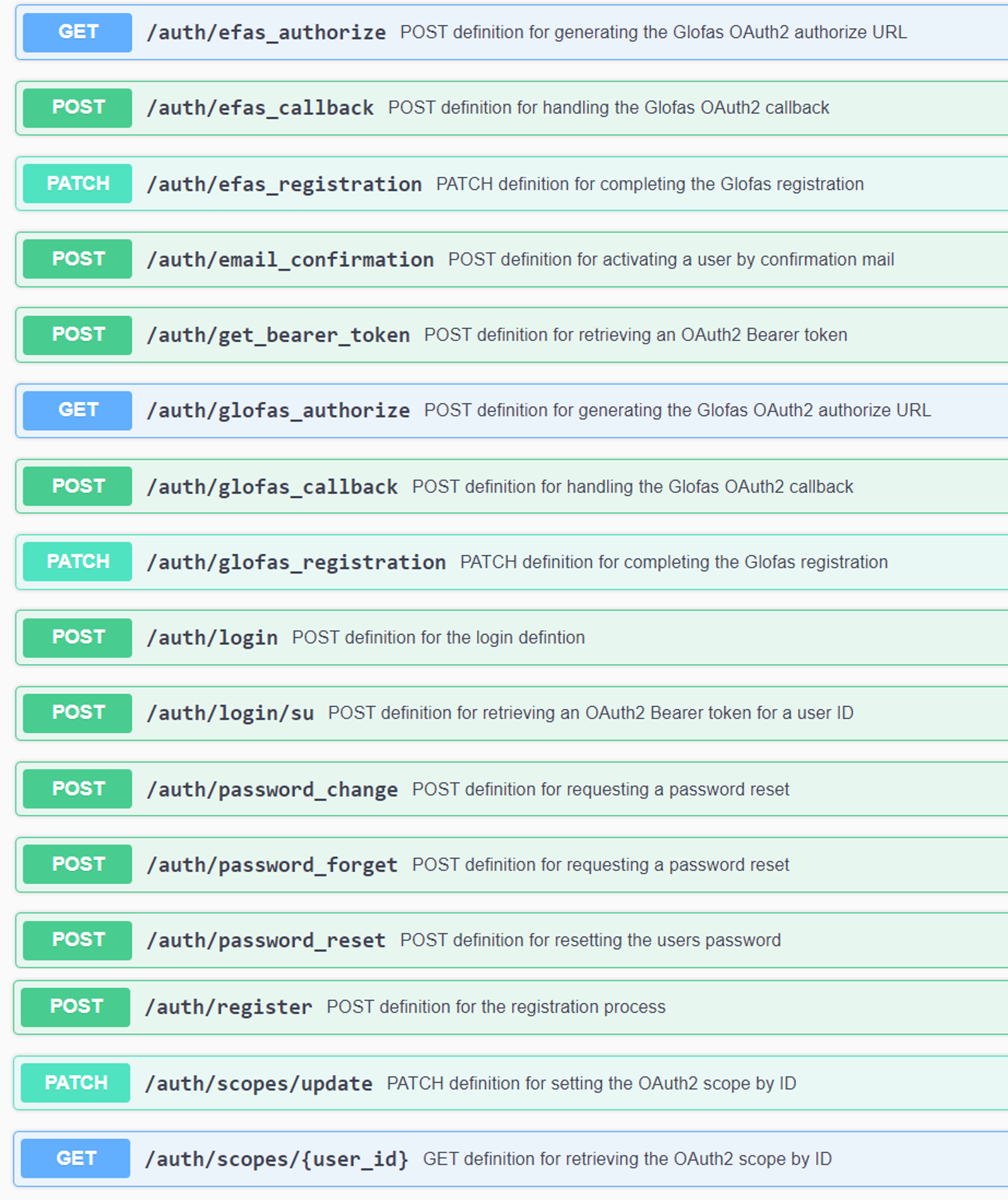
¶ 6.3.2 Users (endpoint specification related to users operations)
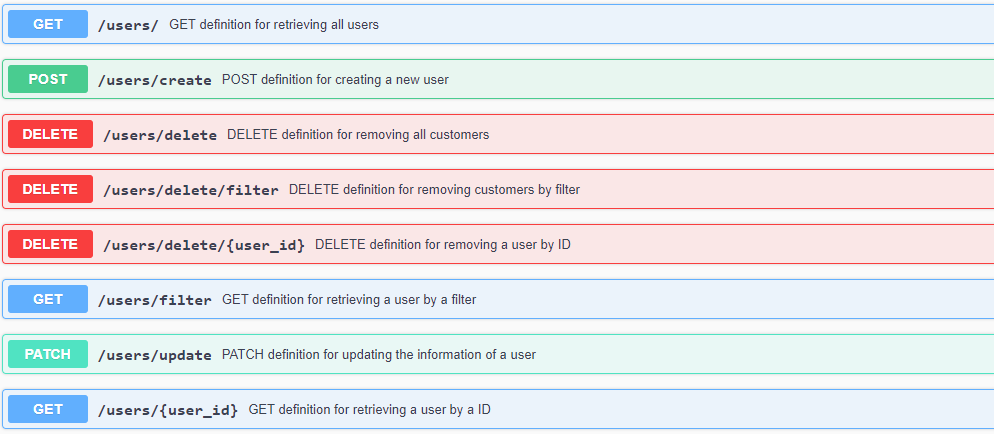
¶ 6.3.3 Download (endpoint specification related to the GFM product download)
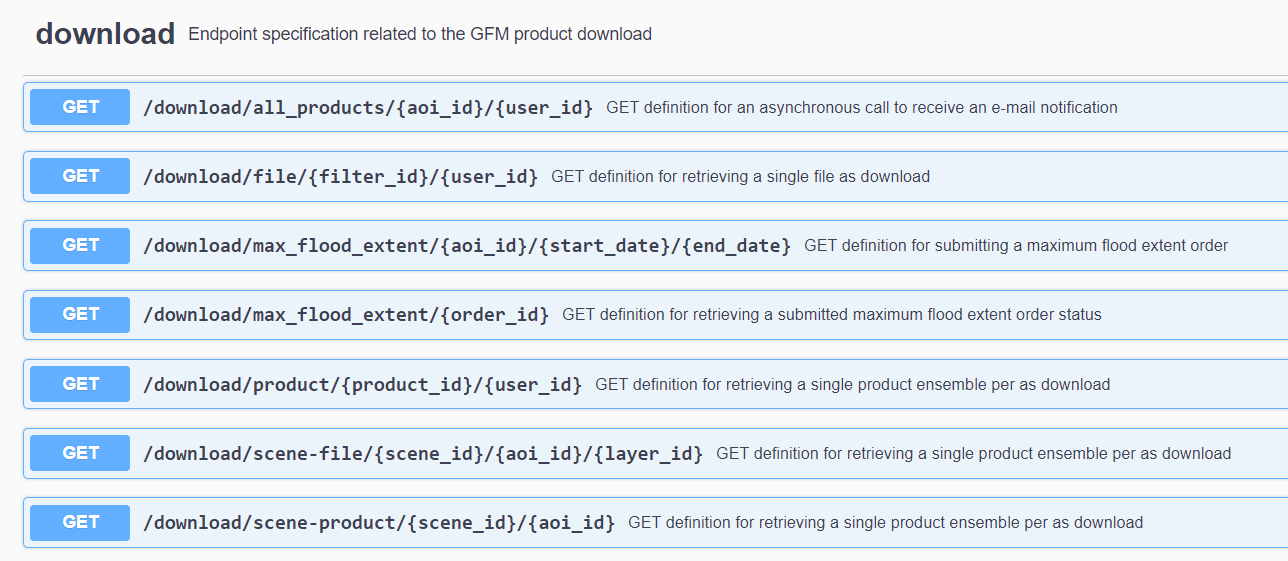
¶ 6.3.4 Legend (endpoint specification related to product legends)

¶ 6.3.5 Notifications (endpoint specification related to the notification service)
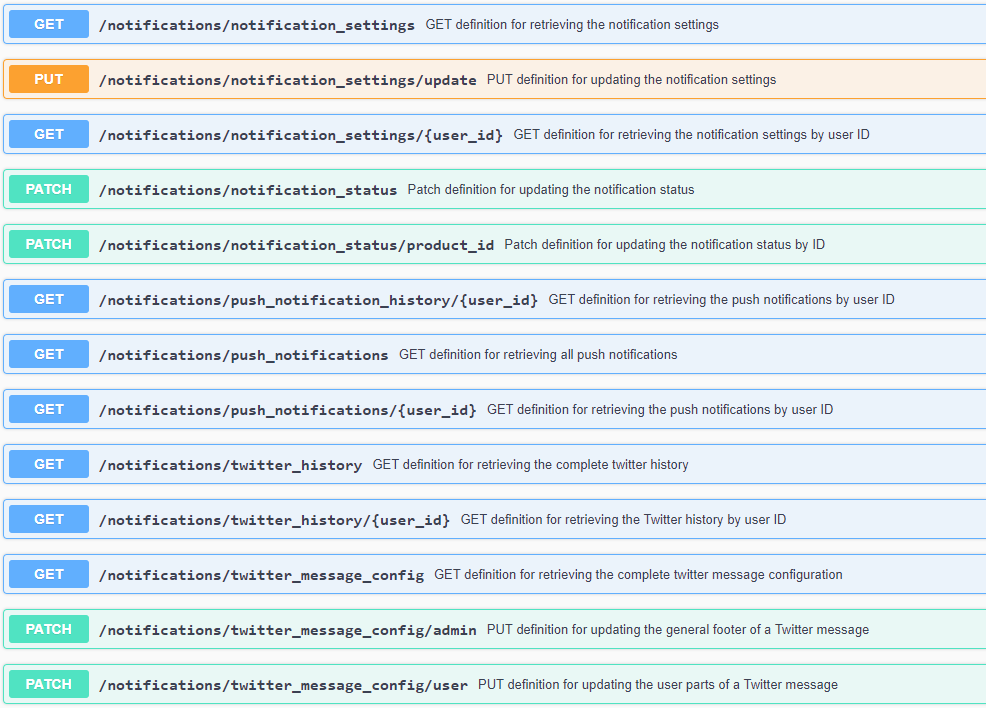

¶ 6.3.6 Products (endpoint specification related to the GFM products)

¶ 6.3.7 Reporting (endpoint specification related to the GFM report generation)

¶ 6.3.8 AOI (endpoint specification related to the area of interest)
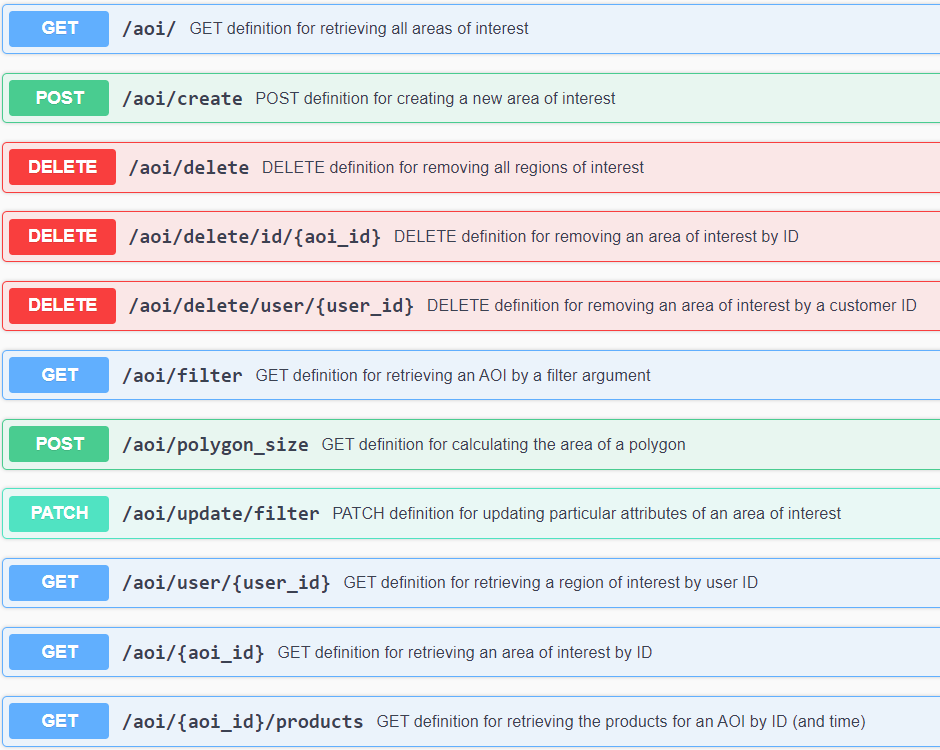
¶ 6.3.9 Support (endpoint specification related to support requests)

¶ 6.3.10 Utils (endpoint specification for general operations)

Didn't find what you were looking for? Send us a message through the contact forms:
EFAS: https://european-flood.emergency.copernicus.eu/en/form/feedback [Flood Monitoring]
GloFAS: https://global-flood.emergency.copernicus.eu/contact-us/ [Satellite-based Global Flood Monitoring]